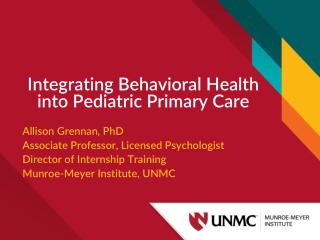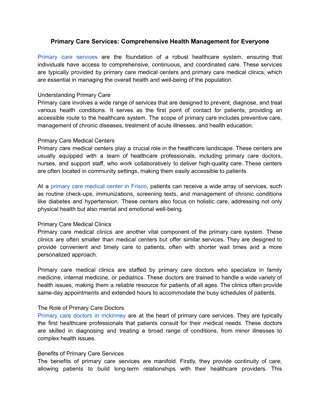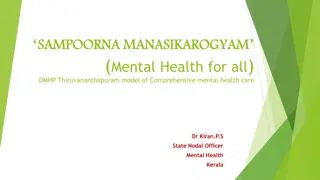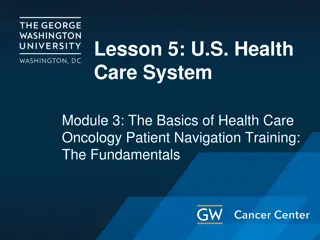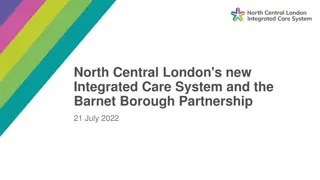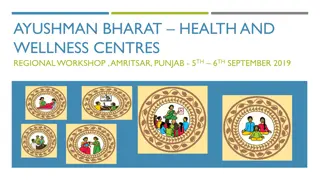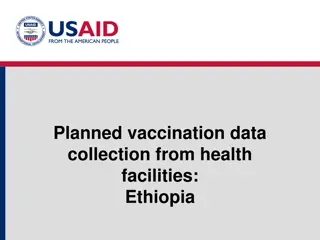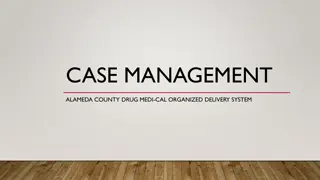
Comprehensive Health Care Delivery System in India
Explore the comprehensive health care delivery system in India, ensuring need-based services for people, especially in remote areas. Learn about the national, state, district, and local levels of administration, functions, and key entities involved in providing health care services.
Download Presentation

Please find below an Image/Link to download the presentation.
The content on the website is provided AS IS for your information and personal use only. It may not be sold, licensed, or shared on other websites without obtaining consent from the author. If you encounter any issues during the download, it is possible that the publisher has removed the file from their server.
You are allowed to download the files provided on this website for personal or commercial use, subject to the condition that they are used lawfully. All files are the property of their respective owners.
The content on the website is provided AS IS for your information and personal use only. It may not be sold, licensed, or shared on other websites without obtaining consent from the author.
E N D
Presentation Transcript
Definition It is a system which ensures need based comprehensive health care services to people at large especially those living in remote and backward areas, using available resources, manpower, money and material.
Health Care Delivery System In India Union of 29states and 9 union territories Population is more than 1.3 Billion Ruralpopulation 65% Diversified culture Developingcountry
MOHFW NationalLevel DGHS CCH State Level Sub- District CD Block Panchayat Taluka District Level Village Municipality Village/ Local Panchayat Zila Parishad Panchayat Samiti
01-NATIONAL LEVEL The official organs of the health system at the national level consist of: 1. The ministry of health and family welfare 2. The Directorate general of health services 3. The central council of health. Functions Surveys Planning Co-ordination Programming Appraisal of all health matters in the country
02- STATELEVEL 1. State ministry of health 2. State healthdirectorate Functions Prevention of of communicable andNCDs Prevention of adulteration of food stuffs Controls of drugs and poisons Vital statistics Labour welfare Ports other than major Economic and social planning Population control and family planning
03- DISTRICT LEVEL Administration in India is the district under the Collector ( 720 districts in 2019). Within each district again there are 6 types of administrative areas: 1. Sub-Divisions 2. Talukas or Tehsils 3. Community Development Blocks (Rural) 4. Municipalities and Corporations (Urban) 5. Villages 6. Panchayats ( District Collector, Dy.DC, MP, MLA, BDO, Parsad, Sarpanch, Ward member etc)
Function at districtlevel 1. construction and maintenance of roads 2. sanitation and drainage 3. street lighting 4. water supply 5. maintenance of hospitals and dispensaries 6. education 7. registration of births and deaths.
4. LOCAL LEVEL/Village 1. Panchayat ( at the village level) 2. Panchayat samiti(at block level) 3. Zila parishad(at district level) At the village level :The Panchayati Raj atthe village level consists: Gram sabha Gram panchayat Nyaya panchayat
HEALTH CARE MODEL IN INDIA HEALTH CARE SYSTEM/ Organization HEALTH CARE SERVICES INPUT OUTPUTS HEALTH STATUS& HealthProblems PUBLIC PRIVATE VOLUNTARY INDEGENOUS NGOs CANGES IN HEALTH STATUS CURATIVE PREVENTIVE PROMOTIVE Rehabilitative RESOURCES
HEALTH STATUS AND HEALTH PROBLEMS IN INDIA
Major HEALTH PROBLEMS IN INDIA 1.COMMUNICABLE DISEASES: 1. 2. 3. 4. 5. 6. 7. 8. Malaria Tuberculosis Diarrheal diseases Leprosy Filaria HIV Aids ARI Others Kala-azar , meningitis, viral hepatitis, encephalitis, enteric fever, guinea worm diseases. Japanese
2.NUTRITIONALPROBLEMS a) Protein-energymalnutrition b) Nutritional anemia c) Low birth weight d) Xerophthalmia e) Iodine deficiency disorders
3. ENVIRONMENTAL SANITATION: a) Lack of safe water in many areas of the country Use of primitive methods for excreta disposal/open Defecation c) Pollution b)
4. MEDICAL CARE PROBLEMS: 1. Unequal distribution of health resources between rural and urban areas Lack of penetration of health services within the social periphery. 3. Lack of financial resources to treat persons in large hospitals 4. No proper facilities to people 2.
5. POPULATION PROBLEMS: employment education housing health care sanitation environment a) b) c) d) e) f)
Organizational framework of Health Care Systems PUBLIC Sector PrivateSector AYUSH NGOs &Health Agencies A. PrimaryHealth Care a.Primaryhealth centers b. Sub centers a.Private hospitals, polyclinics, nursing homes b.General practitioners clinics c. Dispensaries a. Ayurveda b. Siddha c. Unani d. Tibbi e. Homeopathy f.Yoga g.Unqualifiedand unregistered practitioners. a.SEVABharati Rural b.Bhansali Trust c. ARCH Mangrol ( Action Research in Community Health & Development) B. Hospitals a. CHC /Taluka Hospitals b. District hospitals c. Teaching hospitals d. Specialist hospitals C. Otheragencies a. ESIC Hospitals b. Railway hospitals c. Defense hospitals
Primary Health Care The Alma (1978) Ata conference called for proclaimed primary health care as way to achieving health for all. Health For All (HFA)
DEFINITION: Primary health care is the essential health care made accessible to acceptable to them, through their full participation and community and afford. universally individuals and at a country cost the can the
PURPOSES 1. Increase in life expectation. 2. Improvement in nutritional status. 3. Provision of basic sanitation. 4. Development of manpower and other resources.
8 -Essential Components ofprimary health care. 1. Education concerning prevailing health problems and the methods of preventing and controlling. 2. Promotion of food supply and proper nutrition. 3. Adequate safe water supply and basic sanitation. 4. Maternal and child health care, including family planning.
5. Immunization against major infection disease. Privation and control of locally endemic diseases. Appropriate treatment of common disease and injuries. 8. Provisional treatment of community. 6. 7.
5 AsofPrimaryHealthCare Accessible Affordable Primary healthcare Acceptable Appropriate Adaptable
ATTRIBUTES OF PRIMARYHEALTH CARE Essential healthcare Universallyaccessible Acceptable Community based First point ofcontact Affordability
ATTRIBUTES Contd... Adaptability Appropriateness Community participation Continuity Comprehensiveness Coordination
Principles 1. Equitable distribution 2. Manpower development 3. Community participation 4. Inter-sectoral coordination 5. Appropriate technology
Tier of health care in India The health care services in India are organized at three levels, each level supported by the higher level, to which the patient is referred. Tertiary State Hospital MedicalColleges Secondary DH / CHC / TalukaHospital Primary PHC / Sub Centre
Staffing of Primary health care in India in rural areas 1. Villagelevel At village level there are health functionaries chosen by the local community themselves. 1. Village health guide, 2. Local Dai , 3. ASHA and Anganwadi worker. 4.
2. Sub-centre (SC) level For population of 5000 in plain areas & 3000 population in hilly, tribal and backward areas. Staff: 1-MPHW male, 2-MPHW female called ANM,Auxillary nurse midwife). (MPHW-F previously At present providing immunization services and family planning. functions of a SC are limited to mother and child health care,
3. Primary health centre (PHC) The concept of a PHC was given by Bhore committee. Currently there is 1 PHC per 30,000 population in plain areas & 20,000 in tribal, hilly and backward areas. It has a staff of 15 including a doctor. 6 Beds
4. Community health centre (CHC) Established at block level Catering to a population of 80,000 to 120,000. first referral units (FRU) from PHCs. Total staffing strength is 25. 30 IPD beds.



